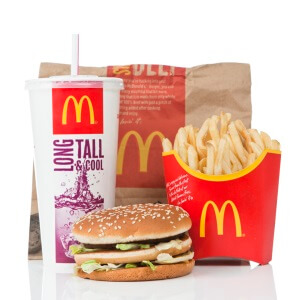
You have done all the homework related to your trademark registrations. Trademarks have a ten-year term in most countries, so you can sit back and forget about brand protection for a while. Or perhaps it’s better not to do that just yet?
This article is a follow up on the first article about the brand portfolio stress test. In this second article we would like to provide you with a checklist on a topic that can play an important role at any time and that will help you to maintain your trademark rights in the event of a conflict.
In an emergency, would you have suitable evidence at hand to demonstrate the use of your brand in an official or judicial process?
Such an emergency can occur in two different ways
- You are defending your trademark right against a younger, similar trademark. In the process, the adversary objects by saying that your brand has not been used, or
- A third party wants to register a new brand, and your similar brand precludes a prior right. In order to remove the obstacle and increase their chances of being registered, the applicant seeks to have your trademark removed from the register.
If you cannot prove the use of your trademark properly, in the first case you will lose your procedure, in both cases your trademark will be in danger of being deleted by a procedure before the trademark office or the court and with it your trademark rights lost.
You must have read in the media about the case of the successful cancellation action against the EU brand Big Mac belonging to the fast food company Mc Donald’s. The company has additional trademark registrations for the Big Mac, so the image damage may have been higher than the legal damage. However, this is one way that rights holders who do not have multiple entries could lose their only and most important trademark.
But how could it be concluded that the well-known BIG MAC brand was not being used? This is what you will surely be asking yourself right now, given the ubiquity of McDonald’s and its products. It is not important whether a fast food lover sits on the decision-making body at the court or in front of the trademark office, who can confirm the use of the brand based on their own knowledge, but whether you can demonstrate the use of your brand in a suitable form.
McDonald’s had submitted evidence of use in the process, but the European Trademark Office considered this to be unsuitable or insufficient.
Use our checklist to check whether you have suitable documents or could obtain them within a few weeks or months in order to demonstrate the use of your brand in a suitable manner and thus maintain its existence:
1. Can you demonstrate usage for the relevant period?
All usage materials must refer to the past five years. Older documents can be useful in individual cases as an indication of use in the relevant period.
2. In which countries do you use your brand?
Basically, you need to provide usage materials for the country where your trademark proceedings are taking place. However, there is an exception for EU trademarks. Here it is sufficient to show usage actions in the large and economically strong markets in a suitable form in order to maintain the protection of your brand in the event of an EU-wide attack. There are special rules for the mutual recognition of the use of trademarks in Switzerland and Germany.
3. Do you use your brand in the registered form and for the registered goods or services?
Trademarks must be used in the form in which they are registered. Modifications are only recognized as legally sustaining if the defining character has not changed. This criterion is interpreted differently by offices and courts. It therefore makes sense to have modified forms protected as a trademark.
If your records show a use for goods or services other than what is included in your trademark registration, this can lead to a partial deletion of your brand for the unused goods or services. For more info on these topics, take a look at the first part of our brand stress test.
4. What types of materials can you submit?
There are no restrictions here. All that’s required is direct reference to the brand and a reference to the date of use.
The following products are suitable examples
- Brochures, advertising posters, flyers and catalogues
- Product tags / sew-on labels for textiles
- Product packaging such as carrier bags
- Photographs of outdoor advertising measures such as posters, advertising on transport of at transport stops
- print advertising; media schematics
- Price lists
- Sales figures
- Website screenshots (keyword advertising/meta tags are not suitable)
The following are particularly useful for the use of service brands:
- Photos of a business premises
- Packaging
- Giveaways
- Employee uniforms
- Price lists
- Sales figures
each with representations of the brand and service.
Make sure to provide information on the quantity of the documents submitted (circulation of packaging, advertising materials and print media; media switching frequency; website statistics, orders via the website) and to establish a concrete relationship to your brand. A mere reference to company entries in Wikipedia, which represent the entire brand portfolio, or to a so-called mood advertisement to strengthen the brand image without a specific product reference would not be sufficient.
5. Are the quantities sold under your brand sufficient?
According to the wording of the law, you must present evidence of ‘genuine use’. This should be differentiated from mere acts of ‘sham use’ to simply maintain the brand. For example, right-preserving use would be affirmed by the sale of two to three high-priced and complex machines in the relevant period, while at least low quantities in the thousands range must be sold for goods for everyday needs at low prices, unless the smaller amount can be explained by the existence of special circumstances.
6. Do you yourself, or a third party that you have authorized to do so, use the brand?
If the license is used by a licensee, appropriate contracts must be in place. So-called ‘inter-company’ sales between affiliated companies are not recognized as brand-preserving use.
This list is not intended to give the impression that everything listed must be presented. Usually a selection of documents that needs to be prepared is sufficient. As brand experts at V.O., unfortunately we cannot take care of collecting and archiving such materials on your behalf.
Trademark offices and courts set deadlines of a few months for the presentation of usage documents. We therefore recommend that you regularly archive these materials. This does not have to be done in paper form. Blockchain technology, in particular, offers the possibility of legally compliant proof of the date of your documents.
Speak to one of our trademark experts if you would like any further info on this or other topics.

